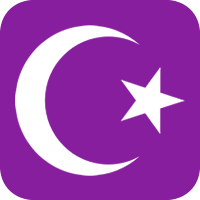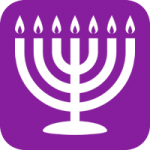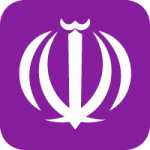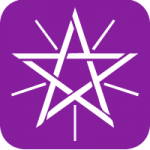Consult this page to find out more about the Islamic Calendar including its origin and how it works. You can also find out which date we are currently in according to the Muslim Calendar here.
 The Islamic calendar, also commonly referred to as the Muslim or Hijri calendar, is a Lunar Calendar made up of 12 months in a year consisting of 354 or 355 days.
The Islamic calendar, also commonly referred to as the Muslim or Hijri calendar, is a Lunar Calendar made up of 12 months in a year consisting of 354 or 355 days.
Determining traditional Islamic events, such as, the annual fast of Ramadan and the date to attend Hajj, the Islamic Calendar is used in the majority of Muslim countries with the exception of Iran and Afghanistan which use the Persian Calendar also available in our selection of Religious Calendars.
The first year of the Islamic Calendar was marked by the emigration of the Prophet Muhammad from Mecca to Medina in 622 AD according to the Gregorian Calendar. The journey of the Prophet is referred to as the “Hijra” and each numbered year of the Islamic Calendar is designated as “H” for Hijra which is why the Muslim community generally refers to their calendar as the Hijri Calendar.
How does the Islamic Calendar work?
In the Islamic Calendar, each month has a total of 29 or 30 days but not in any particular order. The first day of each month, beginning at sunset, is traditionally the day of the first sighting of the crescent moon. If the crescent moon, called the hilal, can't be seen after the 29th day of a month, due to cloud coverage or the brightness of the western sky, then the day from which that sunset begins is the 30th.
Every 33 years in the Islamic Calendar is equal to 32 years in the Gregorian Calendar.
The Days and Months in the Islamic Calendar
The Islamic Calendar is divided into 12 months which have the following names:
| Name | Duration |
| Al-Muharram | 30 days |
| Safar | 29 days |
| Rabi` Al-awwal o primero | 30 days |
| Rabi` al-tani o segundo | 29 days |
| Yumada al-ulà o primera | 30 days |
| Yumada l-taniya o segunda | 29 days |
| Rayab | 30 days |
| Sa`ban | 29 days |
| Ramadan | 30 days |
| Sawwal | 29 days |
| Du-l-qa`da | 30 days |
| Du-l-hiyya | 29 days/30 days |
The first month of the year, Muharram, is the sacred month starting the New Year and the 12th month (Du-l-hiyya) is traditionally the month for taking pilgrimages. According to the Islamic Calendar, the days of the week have the following names:
- al-áhad (الأحد «the first»), Sunday
- al-ithnáyn (الاثنين «the second»), Monday
- al-thalatha (الثلاثاء «the third»), Tuesday
- al-arba‘a (الأربعاء «the fourth»), Wednesday
- al-jamís (الخميس «the fifth»), Thursday
- al-yuma‘a (الجمعة «the meeting»), Friday. It is called this because it is the celebratory day in which the collective reading in the Mosque takes place.
- as-sabt (السبت «the sabbath»), Saturday
What is the date according to the Islamic Calendar?
As an Islamic lunar year lasts for 10 to 12 days less than a civil year, the Islamic Calendar begins between 10 to 12 days earlier in the civil year which follows the previous civil year in which the last Hijri or Islamic year began. Every 33 or 34 Hijri years, which is equivalent to 32 or 33 civil years, the start of a Hijri year coincides with the beginning of January.
To find out the date according to the Islamic Calendar, you can consult the following Date Converter for the Islamic Calendar.












